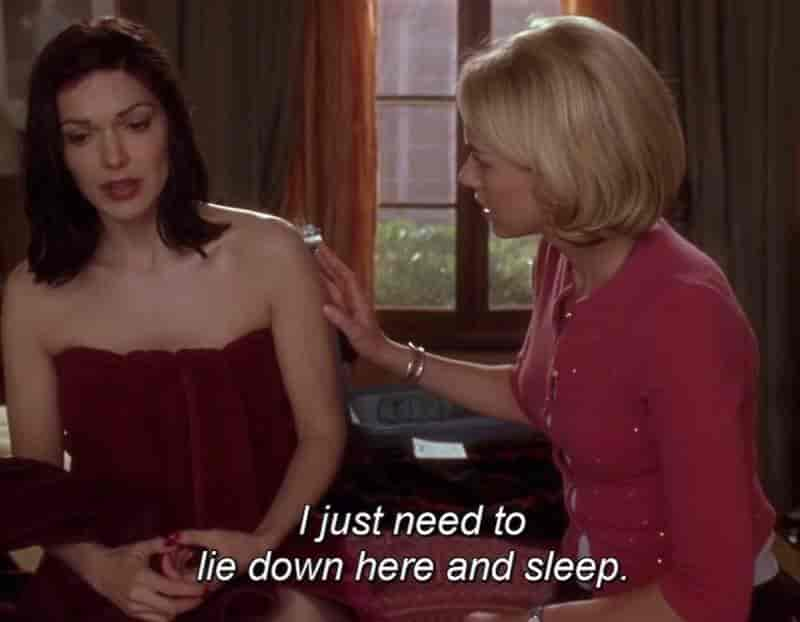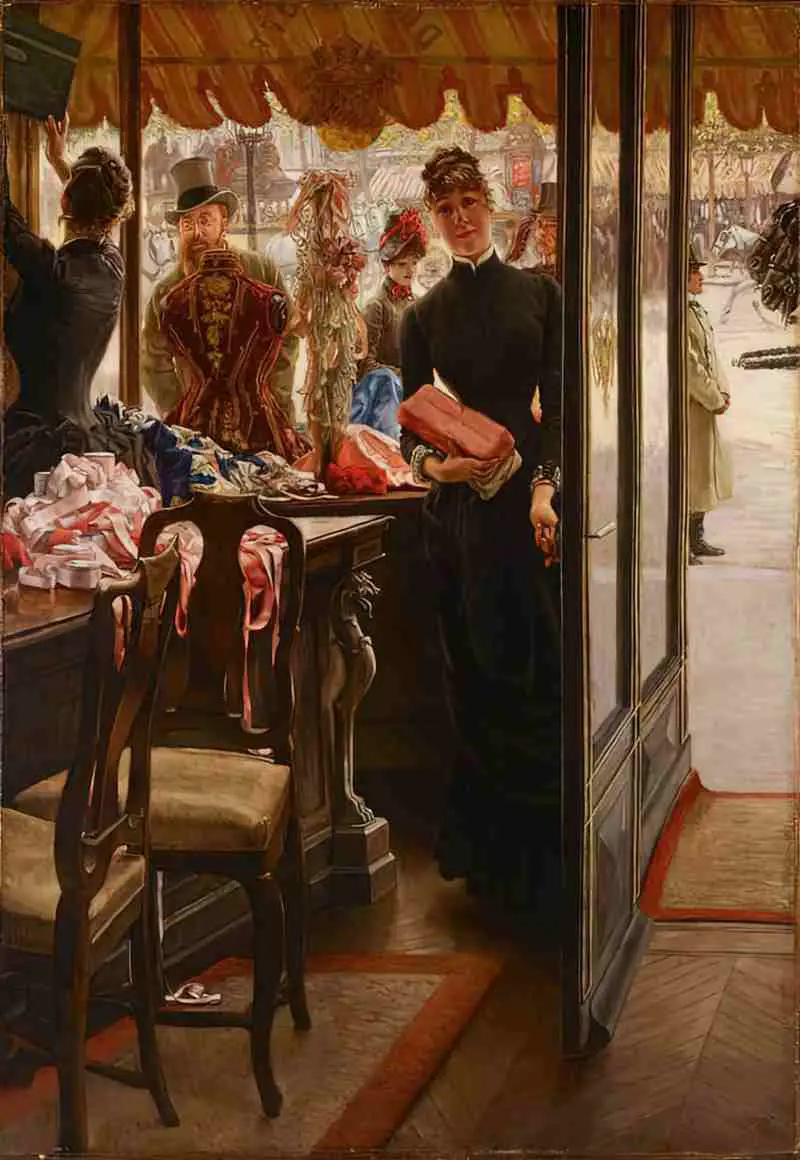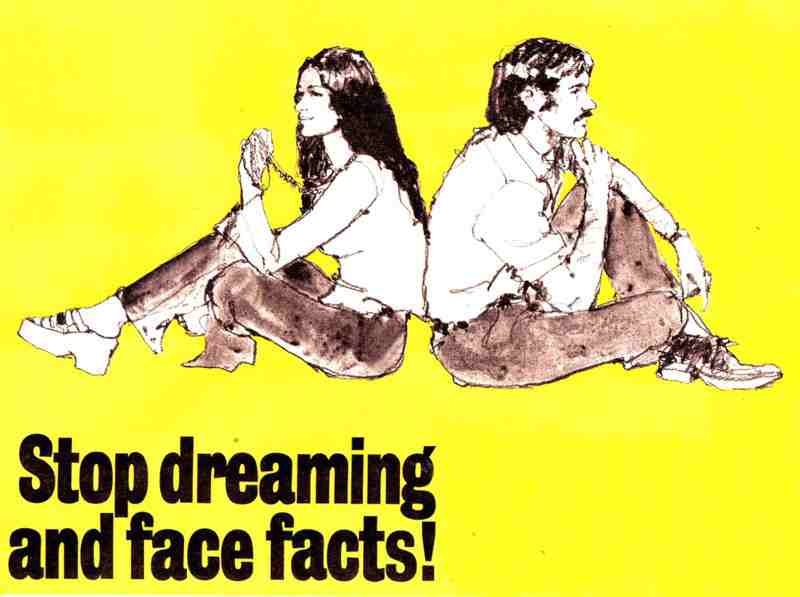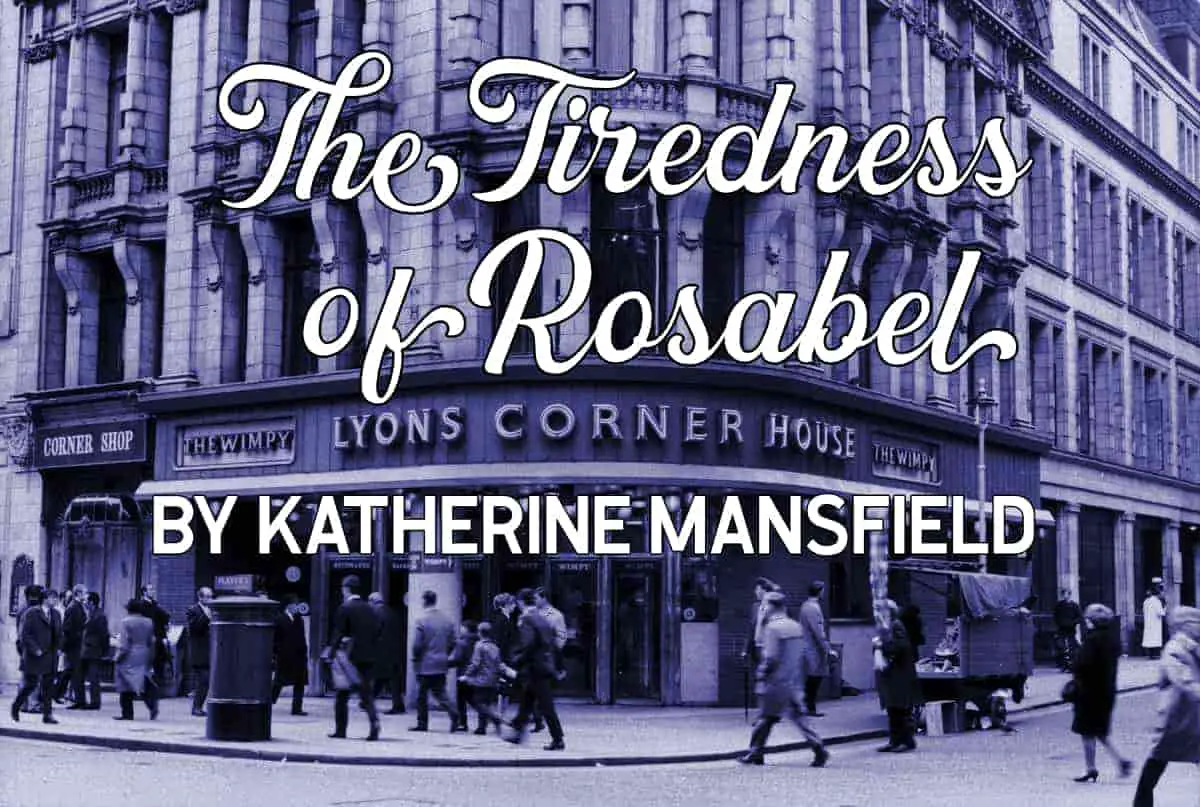Outside school magazines, “The Tiredness of Rosabel” was Katherine Mansfield’s first published story (1908, when Mansfield was 20 years old).
Already we can see features the author became known for:
- The ability of a character to impersonate another
- Daydreams/fantasy used to reveal deeper desires
- Three time levels are used simultaneously (past, present, future)
- A central theme throughout Mansfield’s work: ‘fastidious feminine recoil from the arrogant male, conflicting with a romantic idealism and resulting in disillusionment’ (Alpers).
WHAT HAPPENS IN “THE TIREDNESS OF ROSABEL”
Rosabel takes a bus home after a tiring day working in a millinery shop. She thinks of a good dinner, feeling she would sacrifice her soul. On the bus, Rosabel sits next to a girl reading a sentimental novel. Once home in her room, Rosabel recalls two well-dressed customers who came to the shop to buy a hat for the young lady. They had been hard to please until Rosabel found a hat that entranced them all. Rosabel models the hat at the request of the young woman, who then buys it. The couple leave, but not before the young man has spoken to Rosabel with a touch of insolence.
Alone in her room, Rosabel imagines that she is the young woman with the new hat, inspired by the sentimental novel she noticed on the bus.
STORYWORLD OF “THE TIREDNESS OF ROSABEL”
the limited OPPORTUNITIES FOR WOMEN
In the first paragraph, Rosabel would like to eat a substantial meal at Lyon’s. This is a massive chain which closed the year before I was born, so I’ve had to look it up. Basically, Lyon’s sounds a bit like Starbucks today. In 1920, the waitresses who worked there weren’t allowed to bob their hair. (That rule was loosened up in 1924.) Young women who worked there were supposed to find it easy to find a marriage partner, which is a solemn reminder of the limited options for young women in those days. Mansfield’s character of Rosabel, likewise, existed in the world as a pre-married young lady, whose main purpose in life was to find a husband.

SENSORY IMAGES AND JUXTAPOSITION
Rosabel gets onto a London bus, next to a girl reading a ‘tear’ spattered book. The warm, humid bus with its garish advertisements contrasts with the magical streets outside.
All five senses are evoked:
- The street is blurred and misty
- Rosabel’s feet are horribly wet
- The sickening smell of warm humanity
- The girl licks her fingers and mouths her words
- Rosabel feels stifled
Rosabel’s own room is marked by poverty, with the chipped enamel on the wash basin and the overall grimy description. We already know she’s living in poverty because she’s hungry. She would like a meal including meat but can only afford a scone, tea and boiled egg. Later in the story, a male customer will compliment her on her petite figure. The irony is one that endures today — Rosabel is fashionably petite (in the 1920s, a straight-up-and-down, boyish body for women was the dominant ideal). But Rosabel’s small body is due to lack of nutrition. The man wouldn’t suspect that for a moment, never having experienced hunger himself.
In this era, hats were a booming business because no one was seen in public without one. Hat shops are far fewer now, beause elaborate hats are worn only on very special occasions.

STORY STRUCTURE OF “THE TIREDNESS OF ROSABEL”
The structure of “The Tiredness of Rosabel” juxtaposes Rosabel’s reality with her imagined world, highlighting the difference between them. In 1908, ‘structure creating metaphor’ was something of a revolution in British short fiction. Mansfield grew up in New Zealand but was part of that revolution. At the time, short stories were not considered an art form in their own right, but rather a sort of inferior novel for beginners.
NARRATION AND LANGUAGE
Apart from the final sentence, the point of view is consistent. The narrator’s comments merge with Rosabel’s thoughts to minimise the distance between readers and the story. This serves to draw the readers into Rosabel’s world and keep us there.
Language employed by the narrator is the same as Rosabel’s, and we hardly notice a difference between Rosabel’s voice and the that of the unseen narrator.
Some critics have said that the final sentence is not in keeping with the tone and focus of the story, violating point of view.
Critics have also said that Mansfield’s parenthetical expressions break the narrative at awkward places. For example, we don’t need to know that Rosabel’s knees are getting stiff and that she is so taken by her own fantasy that she laughs out loud. What kind of details should authors include in stories? For more on that, see this post. What do you think about these details? Alice Munro is another short story specialist who includes unexpected detail.
SHORTCOMING
A young woman makes her way home from work in central London. She works in a hat shop.
Rosabel is also a fantasist, but not in a way that damages others, as in the Mansfield-esque movie My Summer of Love.
This story opens with Rosabel buying violets for herself. Later, she dreams the young man buys her great sprays of violets yet still there is enough money for a lavish lunch. Throughout the day, serving customers, she imagines being at a ball. The ball tires her out in the same way serving customers tires her out, hence the title. The story is full of parallels between Rosabel’s real world and her fantasy world.
Fantasising about another life is Rosabel’s way of coping with her own economic reality. She is weary (and I submit, undernourished, probably iron deficient). Mansfield makes use of sentence structure to reflect the weariness of Rosabel. The sentence structure of Rosabel’s real world contrasts with the light structure apparent in her dream state.
We are inclined to be quite harsh on fantasists.

But what are Rosabel’s options, really? Her best hope is meeting a well-off young man to marry.
Rosabel’s innocence is underscored when her imagined night with the man does not include sex – she may not have considered what comes next in a real world relationship.
DESIRE
Rosabel would like to escape living in poverty. That’s her long-term desire, which we deduce from her immediate desires:
- First she imagines she ate a much more expensive and sustaining evening meal.
- Once home and in bed, she imagines scenario in which she and her rich customer swapped places.
The violets in the opening sentence are a motif throughout; like the violets, Rosabel herself is delicate of taste, sensitive, charming and innocent. Perhaps the purple colour of the flowers suggests royalty – the role Rosabel would like to play.
OPPONENT
Rosabel’s foil character is the rich young woman who comes to buy a hat. Rosabel imagines herself in her place later, and she is attracted to (as well as repelled by) the young woman’s beau. The young man is obviously attracted to Rosabel, which is Rosabel’s entry point into her imagined other-self.
PLAN
Perhaps a story like this one challenges the idea that a character needs a plan in order for the story to work.
But Rosabel does have a plan. Her ‘plan’ is to go home and continue her fantasy in private, really delving into her secret, other world.
I’ve often wondered what proportion of people have a secret fantasy world they regularly dip into for fun and escapism. I know anyone who writes definitely has this facility. What about the proportion of humanity who does not write?
BIG STRUGGLE
The ‘Battle’ of this story is the interaction Rosabel has with the young man and woman. She almost cries from anger. We don’t necessarily know exactly what this anger is borne of until afterwards — plain unfairness. When Rosabel is required to try on that hat, she’s literally trying on another girl’s life.
Hats are often used this way in stories, as well as in real life — crowns are the ultimate ‘hat’ which are used to symbolise a new role for its wearer. The addition of a crown suddenly makes one a prince. Hats exist partly to tell the world who you are. White hats and black hats in Western movies tell the audience who’s good and who is bad. Jon Klassen’s tortoises fight over a hat for a good reason — a hat would make one tortoise more important than the other.
ANAGNORISIS
When the young man (creepily, in my opinion) cracks on to Rosabel, despite being there with his own girlfriend, Rosabel seems to realise that finding a rich boy to marry might not be out of her reach after all, because of the way she looks.
As I mentioned above, because she happens to be fashionably slim, Rosabel matches the female fashion of the era, and in a rich girl’s hat she looks exactly the same as a genuine rich girl.
Why could that not have been her? It’s all down to luck and circumstance. And she knows it. Perhaps she has realised it fully, only after literally trying on another woman’s hat.
NEW SITUATION
Rosabel goes about her day, eventually building upon her regular fantasy of a better life.
We extrapolate that she will go to work at the hat shop the next day and the next and the next. Because of her looks, who knows? She may well attract the serious attention of a rich boy.
But I doubt it. Rich boys don’t enter hat shops unless they’re there with an existing girlfriend. And this boy isn’t serious about Rosabel. I think he enjoys the adrenaline of temporary attraction, and the power he has over a shop girl, unable to respond as herself, bound to formality by her subservient role. I learnt this as a young woman working in customer service: some customers love this dynamic and seek it out.
So what of that final sentence? Mansfield seems to be saying that because of Rosabel’s youth, she’s still optimistic that she’ll marry her way out of poverty. She is still able to smile, unlike Miss Brill of a later story, who realises suddenly that she is old. For Miss Brill, an unpleasant day out seems to mean her life will keep going the way it is, possibly without change, until she dies.
FOR FURTHER INVESTIGATION
- How To Write Like Katherine Mansfield
- American writer Carson McCullers had her first short story published around the same age.
- The Symbolism of Hats

